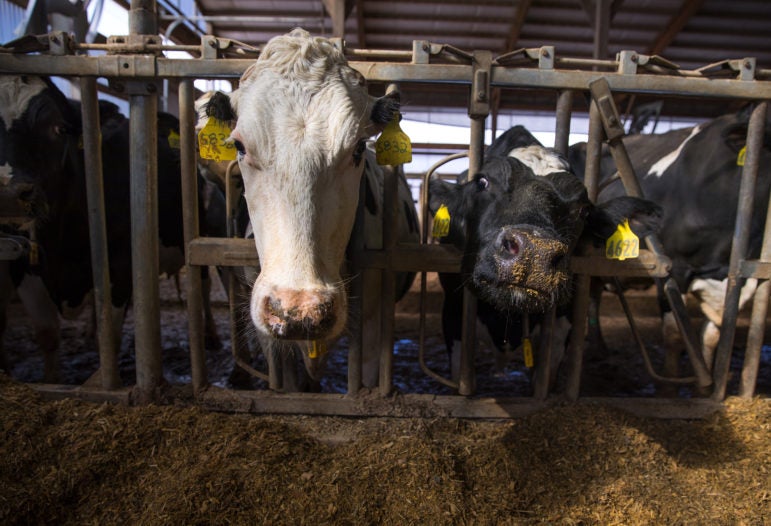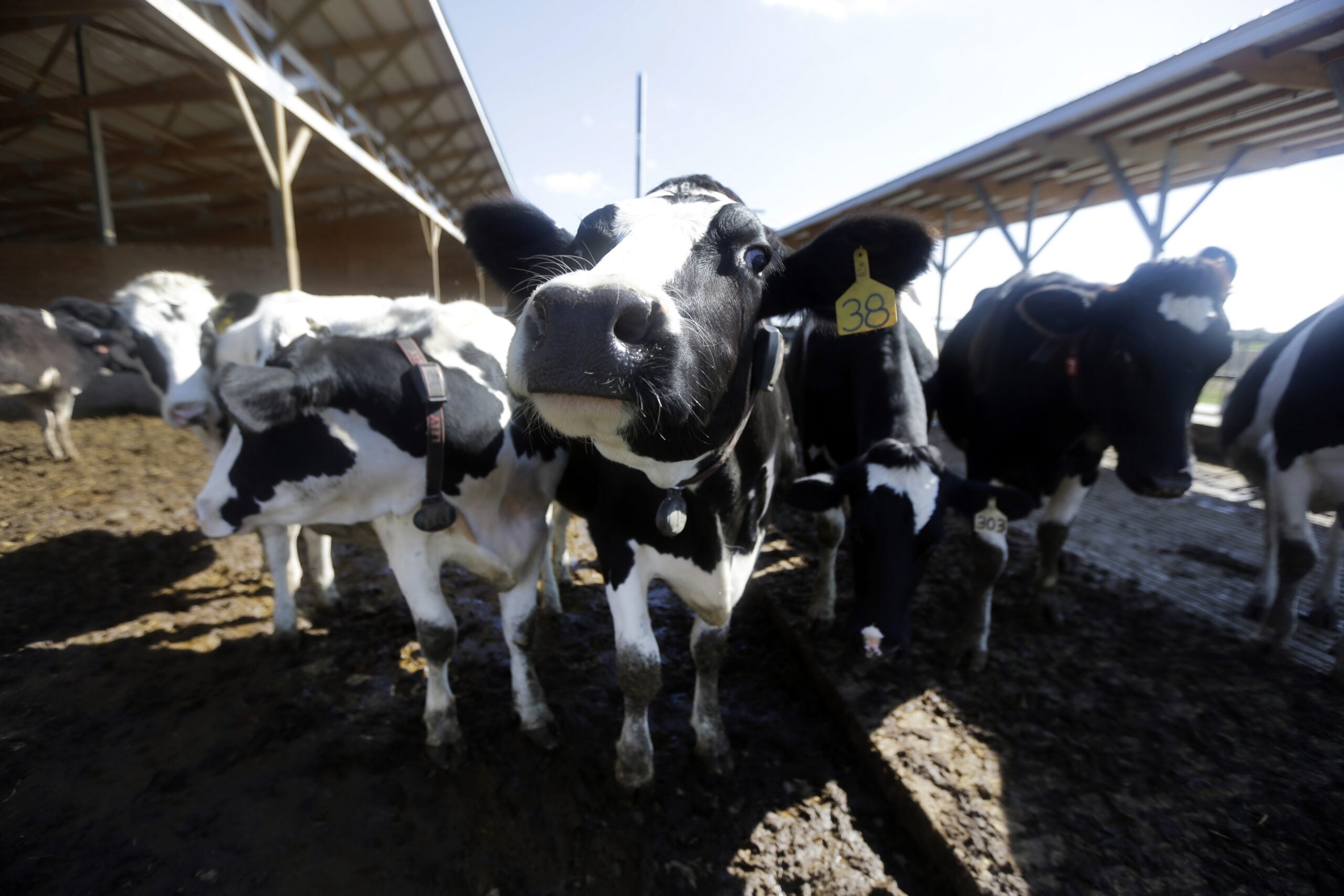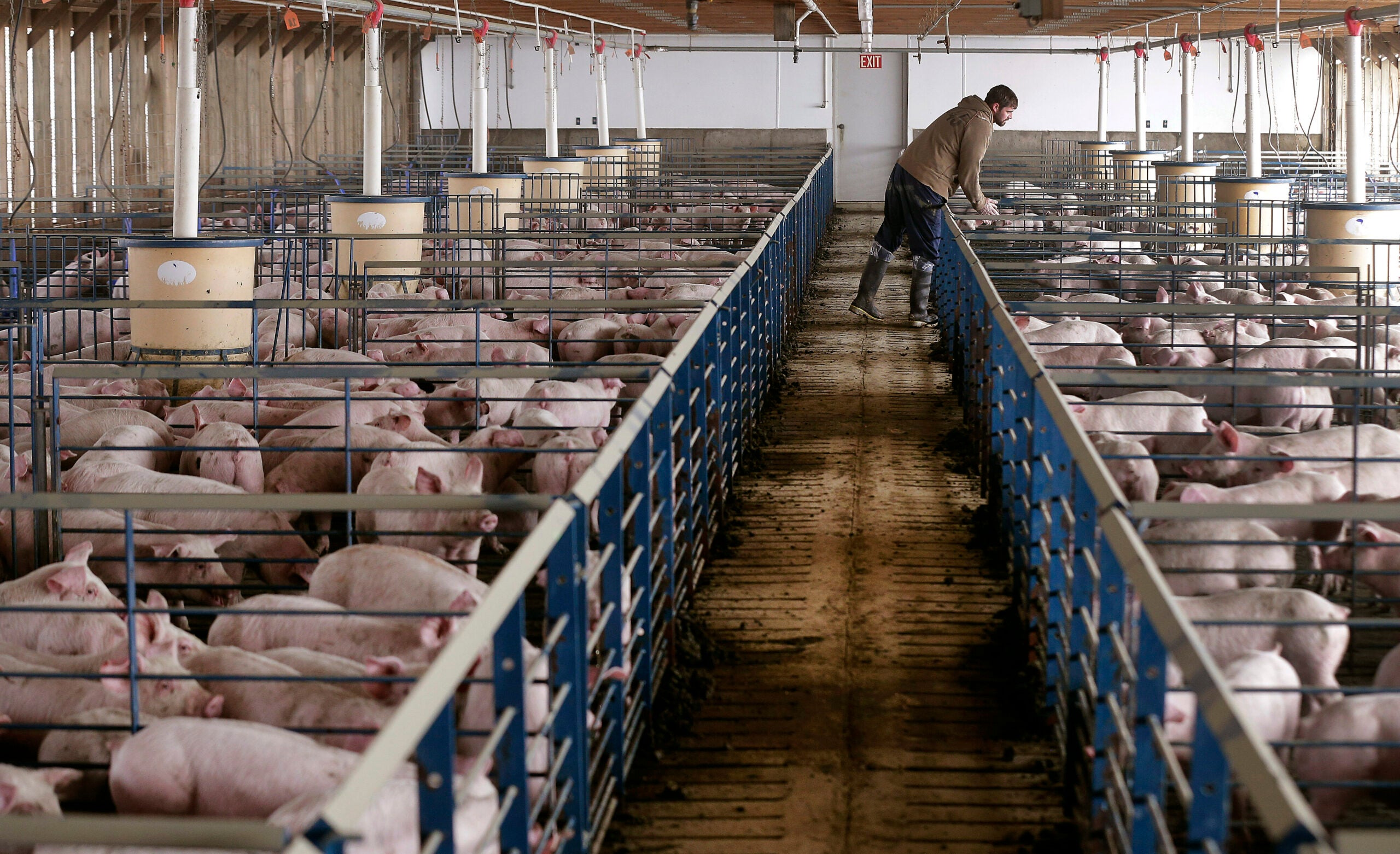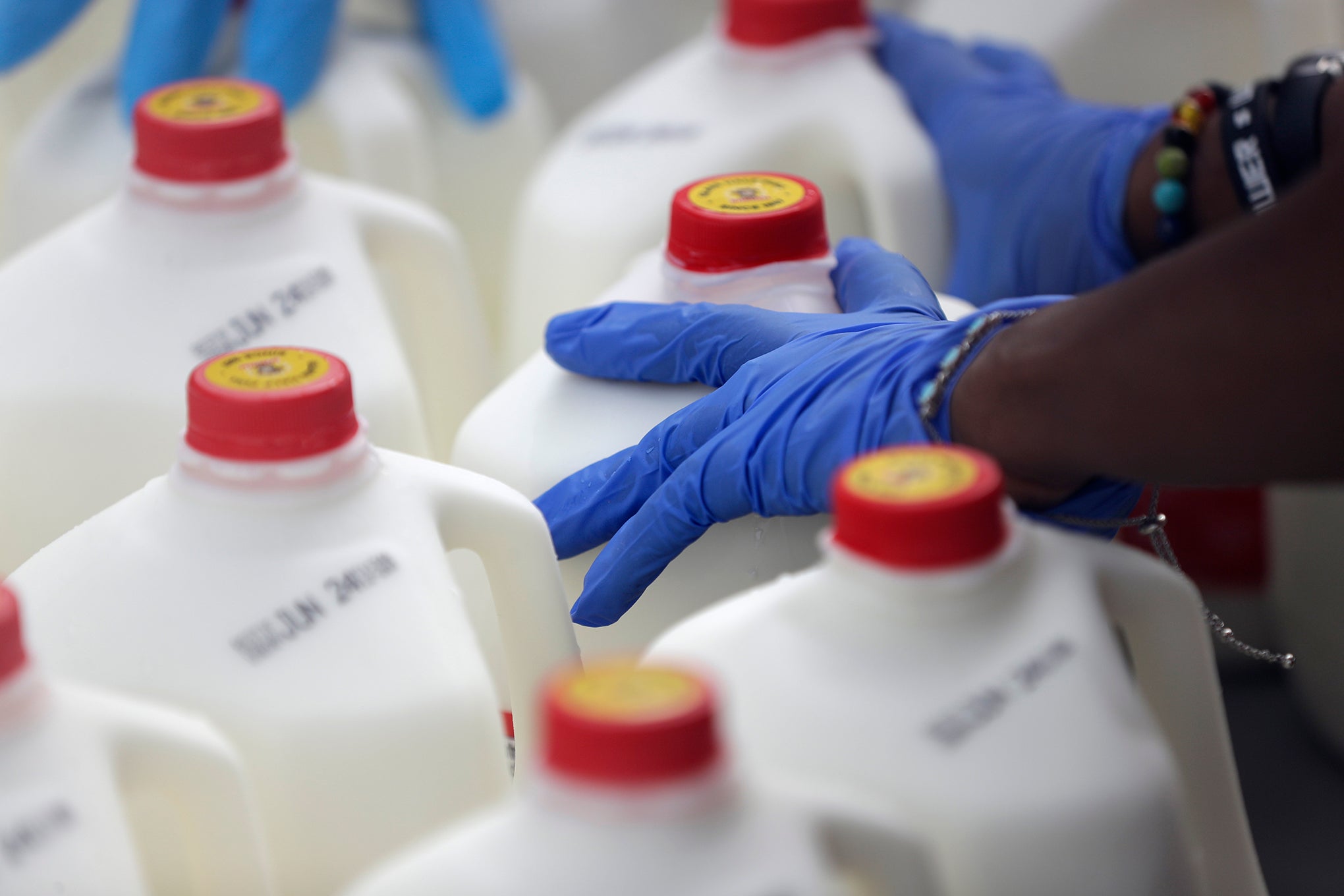When Grassland Dairy Products dropped the contracts of 75 Wisconsin farmers this spring, there was a short panic that all of those farmers were going to have to dump their milk. Almost all of the farmers found buyers, and that didn’t happen.
But, millions of gallons of milk are thrown out each year.
Last year, a little more than 2 million gallons of milk from the region including Wisconsin and Minnesota were dumped, according to data from the Federal Milk Marketing Order. That’s enough to fill three Olympic-size swimming pools. But, the amount of milk dumped each year is small compared to total production. Last year, Wisconsin cows produced more than 3 billion gallons of milk, second only to California.
Stay informed on the latest news
Sign up for WPR’s email newsletter.
There are plenty of reasons why milk might need to be thrown out by a farmer or a milk plant. Sometimes the farmer can’t find a buyer. Milk can also be contaminated by antibiotics, or get too warm.
At Babcock Hall Dairy Plant in Madison, manager Bill Klein said every load of milk that comes into the plant for processing and bottling is tested for temperature, and if it’s above 45 degrees, they send it on its way.
“We don’t discard it ourselves, but we just tell our driver or the company that we buy the milk from that we can’t accept the milk,” he said.
They also test for antibiotics that may have been passed from the cow into the milk. State law requires plants to discard milk contaminated by certain antibiotics. That’s to protect consumers who may be allergic to the drugs, but also because antibiotics can inhibit starter culture bacteria when milk is made into cheese.
A milk sample from each farm is collected, said Steve Ingham, administrator for food and recreational safety at the state Department of Agriculture, Trade and Consumer Protection. Then at the milk plant, the whole load is tested. If the load tests positive, they can go back and see which farm the contaminated sample came from.
This can be a very costly mistake for the farmer, said Ingham. “That farm can be on the hook for the cost of all the milk that’s dumped, he said. “So, one farmer messing up can be an expensive mistake and it’s going to affect a lot of milk.”
According to data from the DATCP, milk dumped because of antibiotic contamination has actually gone down by about 60 percent in the last 10 years. Ingham said he thinks the main reason is because no one wants to bear the cost.
“Dairy plants don’t want to depend on farmers who mess up,” he said. “They’re going to gravitate towards farmers, producers who do a good job. And from the farming point of view, you know you don’t want to make those costly mistakes.
So what actually happens to the milk that’s dumped? It’s not just poured down the drain, explained Brian Holmes, professor emeritus of biological systems engineering at the University of Wisconsin-Madison, because milk can actually cause farmers’ wastewater systems to fail.
“The fats would float to the surface and that creates that cake,” he said. “A drain field relies on infiltrating the water into the soil, and all those milk proteins and sugars and some of that fats will seal up the soil so that the liquid can’t drain into the soil.”
Often the best thing to do is to load the milk onto a manure spreader and spread it over a farm field. Holmes said it’s still important to be careful not to apply too much too quickly.
“You might have a runoff situation,” he said. “And if it runs off and gets into a stream, then you’d be in trouble with contaminating a stream.”
In some cases, he said, it can be fed to livestock.
This story is part of a yearlong reporting project at WPR called State of Change: Water, Food, and the Future of Wisconsin. Find stories on Morning Edition, All Things Considered, The Ideas Network and online.
Wisconsin Public Radio, © Copyright 2024, Board of Regents of the University of Wisconsin System and Wisconsin Educational Communications Board.





